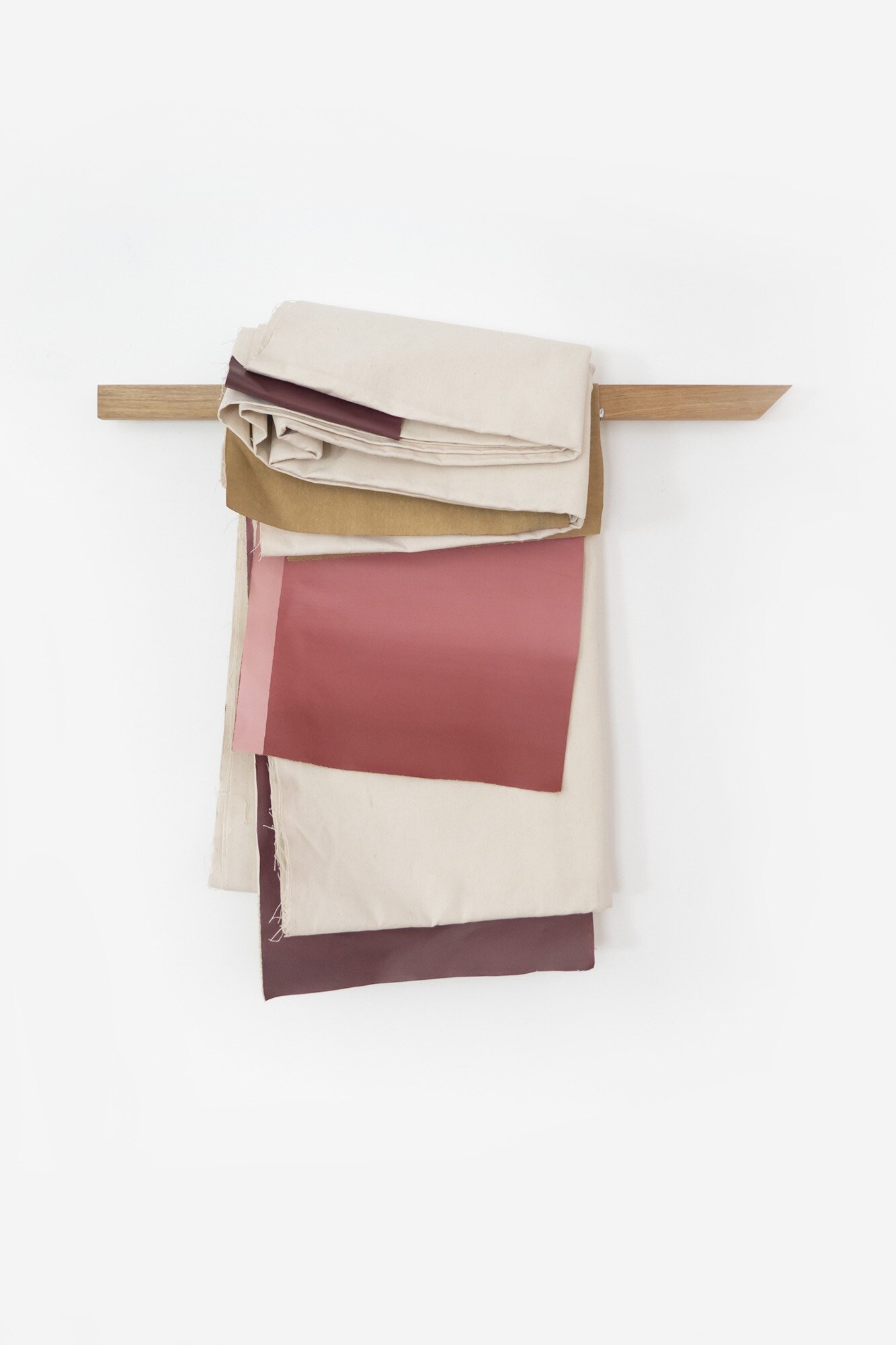Camila Lamarca: beyond the frame
A text by Luz Hitters
November 2020
Camila Lamarca, Cuerpo de Obra II
I am always amazed by the resilience of artists who work alone, with materials that triplicate them in size. The struggle behind the results is palpable. From how the piece stands perched atop a two-meter-high flight of stairs, to the wall-based arrangement's cunning adjustment, to the manner in which the artist uses their body weight to hold the piece together. In a world dominated by mass production and catered to by an array of industrial suppliers, the artist's choice of working with their full strength gains further significance. There is a heroic implication in using one’s whole body as part of the raw material. In fact, this effort can many times be perceived beyond the object.
The idea that an artwork may overflow the borders of its canvas is a recognised and frequently explored phenomenon in art today. This event could be literal, allowing the content of a work to overpower its own frame and invade the space within which its exhibited, becoming part of it: as an installation, a subversion of the media. However, what I intend to illuminate here is not only how the concept of painting can be disrupted, but also what transcends the piece. In other words, how artworks can have a presence.
Camila Lamarca, Cuerpo de Obra I
When reflecting on an artwork’s entity, Camila Lamarca (b. 1988, Argentina) comes to mind. She has been exploring the corporeal aspects of painting for a number of years. Originally a painter, the artist expands her practice beyond the frame, blurring the line between the traditional medium of painting and the attributes of sculpture. The end results are massive installations where fabrics fold, hang and even stand independently. As such, work and space converge.
Lamarca’s research departs from the study of colour as she focuses on one at a time. She describes her relationship as borderline obsessive, exclusively exploring the monochrome until she exhausts its tones. This allows her to “open” and “close” palettes as she delves into each topic associated with singular shades. As she feels the subject becomes exhausted, or that the cycle is closed, she moves into another one, using it as a catalyser to a different perspective.
Camila Lamarca, Cuerpo de Obra I
Her latest creative research is called Cuerpo de Obra (Body of Work, 2019-2020) and departs from a colour scheme governed by pink and white. Her work is separated into two phases, as she explores what we understand by painting and defines its limitations. The choice of colours emphasises the enquiry behind the components of painting and juxtaposes it to the concept of flesh. Ergo, she merges both ideas into one.
During the first phase of her research, Lamarca restructures the elements of the canvas and renders visible its multiple faces. She invites the viewer to rethink the work’s beginning and end: its construction and how artist’s concerns are materialised into an artwork. This alludes to the concept of sublimation, in which instinctive impulses are transformed into an elevated outcome that is socially accepted and valued. By exposing the painting’s basis, she raises questions regarding the creative process. Are these impulses part of the work? Are the actions performed on it? What constitutes a painting?
Camila Lamarca, Cuerpo de Obra I
In the second phase of this research, the artist transforms a single cloth into its own being: a kind of ghost that metamorphoses into different forms. Exploring the concept of ephemerality, Lamarca takes painting one step further, proving the endless figures that may arise from a single material. These freestanding pieces evidence the metaphysical presence of an artwork and the impact they leave behind. By inhabiting these spaces in an almost spectral mode, her “bodies” suggest that an artwork’s existence goes beyond its physicality and that its impression persists in time.
Camila Lamarca, Cuerpo de Obra II
The artist also explores the convergence between space and art in her series Testimonio (Testimony, 2019) where she projects paintings into the environment. Lamarca creates walls made of canvases and slashes “windows” onto them, as a means of contemporary spatialism. While doing so, she extends the work into the room, unconsciously playing with the limits between artwork and reality. The installation folds and falls, inviting the viewer to see what is behind the frame: to change perspective. As such, she plays with the tension between hiding and revealing, absence and existence, questioning where the piece ends. Lamarca states that it seems almost unfair to devalue the canvas’ entire structure. Her work does not only foreground the hidden anatomy of the piece but also invokes reflection on its form. She thereby encourages viewers to question their understandings of an artwork’s limitations.
Camila Lamarca, Testimonio
Her work also intends to challenge inertia by inviting viewers to simply contemplate change. In Azul Liviano (Lightweight Blue, 2017) Lamarca covers three massive columns with blue gesso and exposes their collapse. Slowly but steadily, the piece loses weight, texture and colour, disintegrating into the exhibiton room. As the piece disappears so does the energy behind its creation. However, this new process also becomes part of the piece, shedding light on its shifting essence.
Camila Lamarca, Azul Profundo
When piecing together Camila Lamarca’s practice, one senses how the artist’s actions are at the core of their oeuvre and how viewers can sense this dynamic. It is impossible to separate the endeavour from the final result. By investing her whole in the creation, the artist leaves an impression that acts as a presence. Her work suggests that art has an individuality, a spirit beyond space and time; a life of its own.
Camila Lamarca, Donde Habita lo Oculto













